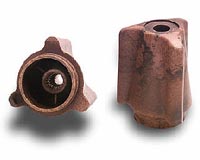Curiously, the cancer rate is 10 percent higher in the left breast than in the right. This left-side bias holds true for both men and women and it also applies to the skin cancer melanoma. Researchers Orjan Hallberg of Hallberg Independent Research in Sweden and Ollie Johansson of The Karolinska Institute in Sweden, writing in the June issue of the journal Pathophysiology, suggest a surprising explanation that not only points to a common cause for both cancers, it may change your sleeping habits.
Electromagnetic waves resonate on a half-wavelength antenna to create a standing wave with a peak at the middle of the antenna and a node at each end, just as when a string stretched between two points is plucked at the center. In the U.S. bed frames and box springs are made of metal, and the length of a bed is half the wavelength of FM and TV transmissions that have been broadcasting since the late 1940s. In Japan most beds are not made of metal, and the TV broadcast system does not use the 87- to 108-megahertz frequency used in Western countries.
Thus, as we sleep on our coil-spring mattresses, we are in effect sleeping on an antenna that amplifies the intensity of the broadcast FM/TV radiation. Asleep on these antennas, our bodies are exposed to the amplified electromagnetic radiation for a third of our life spans. As we slumber on a metal coil-spring mattress, a wave of electromagnetic radiation envelops our bodies so that the maximum strength of the field develops 75 centimeters above the mattress in the middle of our bodies. When sleeping on the right side, the body's left side will thereby be exposed to field strength about twice as strong as what the right side absorbs.



